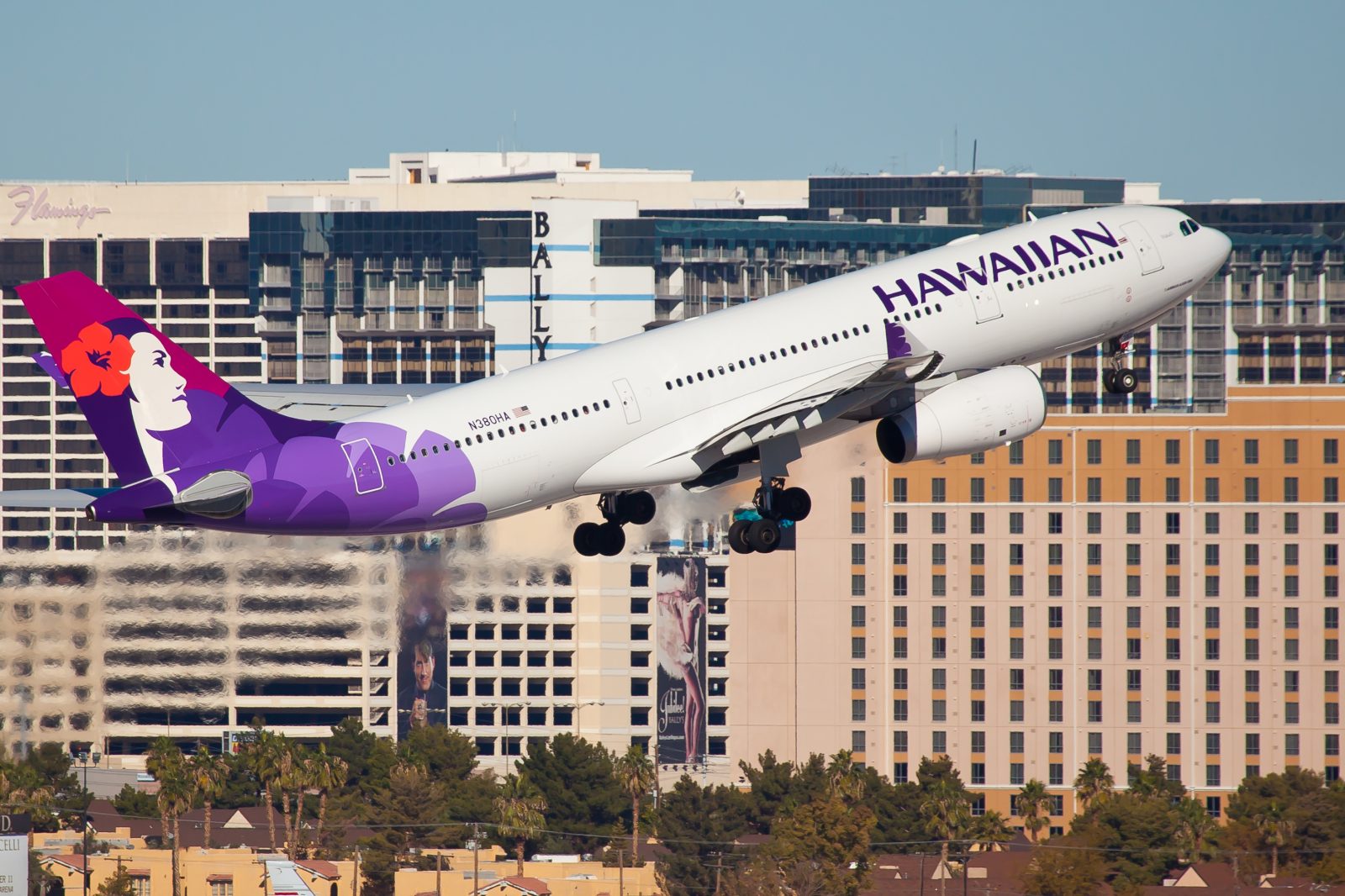Passengers Felt Like They Were ‘Free Falling’ After Pilots of Hawaiian Airlines Flight Headed Straight Into Dangerous Storm Cell That Injured 25 People
- The pilots of an Hawaiian Airlines flight that encountered severe turbulence in December 2022 alerted the lead flight attendant of the risk just 3 seconds before the plane started to 'dive' and 'free fall'

The pilots of a Hawaiian Airlines plane that was rocked by severe turbulence, injuring 25 passengers and crew during a December 2022 flight to Honolulu, knew that there was a risk of severe weather on their chosen flight path but decided to fly through the developing storm.
The revelation emerged in the final accident report into the incident aboard Hawaiian Airlines flight HA35 on December 18, 2022, which was published on Thursday by the National Transportation Safety Board (NTSB) following a two-year investigation.
NTSB investigators discovered that the pilots had a wealth of information available to them about the risk of turbulence aboard the packed Airbus A330, including detailed metrological reports from the National Weather Service, which had published a special bulletin for the area in which the pilots would be flying.
Despite noticing a large plume of cloud that was ‘moving fast’ and building quickly below them, the pilots failed to anticipate the severity of the potential turbulence and told each other that the airplane should “clear most of it.”
The pilots did, however, eventually decide to alert the lead flight attendant about the risk of severe turbulence, but the phone call between the cockpit and cabin came far too late. Just three seconds after alerting the lead flight attendant, passengers were sent flying, with some describing what unfolded as if they were “free falling.”
Several passengers sustained serious injuries, including bleeding on the brain, a broken back, a collapsed lung and ruptured spleen, severe spinal injuries, broken ribs, and a broken nose.
One flight attendant also suffered a broken back, as well as broken ribs and a severe head injury.
Passengers interviewed by the NTSB say they saw one person who was sitting in First Class lifted from her seat as the plane suddenly dropped, being sent into a somersault with her feet over her head before she was sent crashing back down into her seat.
A mother traveling with her baby said she felt like the plane was “diving down” shortly before her child flew out of grip. Thankfully, her baby was not injured.
Another passenger said she had got up from her seat to use the restroom when the turbulence struck. She hit the ceiling in the lavatory before being thrown back down to the floor. The injured passenger was left in agony on the floor of the restroom for several minutes before she managed to crawl back to her seat.
An off-duty Hawaiian Airlines pilot who had been sitting in First Class walked through the cabin and surveyed the damage after the turbulence had calmed down.
He came across the woman who had been somersaulted into the air, finding her still lying upside down in an adjacent seat, helping reseat her before going to check on the rest of the cabin.
The flight attendants in the First Class section were “shaken but okay,” although the rest of the cabin wasn’t faring so well. Panels were hanging off the ceiling, and oxygen masks were hanging over some seats.
As he started walking further back, he noticed “considerably more people with blood on them.” Passengers were in shock as flight attendants administered emergency First Aid.
In the mid-cabin galley, at least two of the flight attendants were “incapacitated,” and a third person had a knee injury. So many people were injured that the flight attendants ran out of bandages to stem the bleeding from head wounds, the pilot told the NTSB.
At the back of the plane, he found two flight attendants in shock and strapped into their jumpseats. The crew member with the spinal injury said they felt a “burning sensation” in their back.
Following the turbulence, the pilots admitted to one another that they should have “gone around” the storm. The NTSB concluded that this was evidence that the pilots did, in fact, have plenty of time to fly around the developing storm.
The seatbelt sign had been turned on several minutes before the Airbus A330 hit the area of turbulence, but investigators say that a verbal warning from the pilots over the public address system could have prevented some of the injuries.
The NTSB found that the probable cause of the accident was the “flight crew’s decision to fly over an observed storm cell instead of deviating around it despite sufficient meteorological information indicating the potential for severe convective activity.”
Mateusz Maszczynski honed his skills as an international flight attendant at the most prominent airline in the Middle East and has been flying ever since... most recently for a well known European airline. Matt is passionate about the aviation industry and has become an expert in passenger experience and human-centric stories. Always keeping an ear close to the ground, Matt's industry insights, analysis and news coverage is frequently relied upon by some of the biggest names in journalism.







